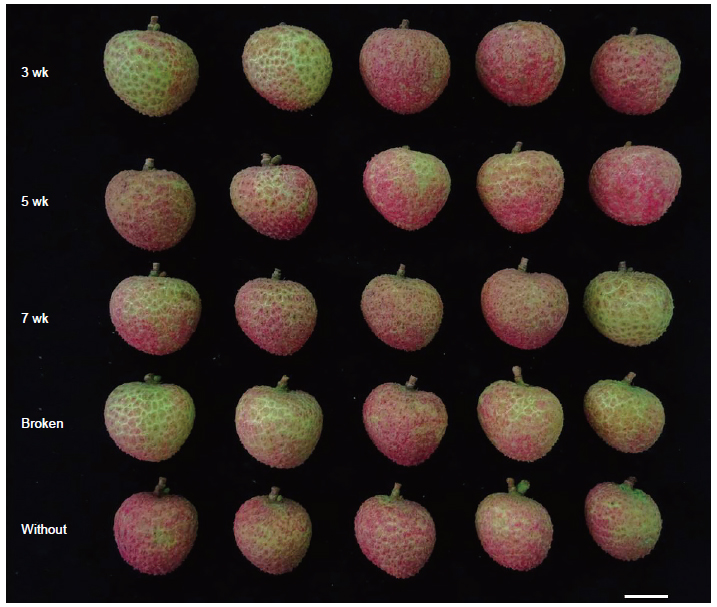All issues

Author:Tai-Chuan Wang, Jer-Way Chang, and Jen Yu Chang*
Abstract:
Litchi fruit borer (Conopomorpha sinensis Bradley) is the most important pest during the fruit growth and development in litchi. Generally growers use chemical pesticides to control pest efficiently. Bagging is an alternative method, providing suitable growing environment and safe fruit. The litchi variety ‘Tainung No. 1’ may have potential to develop into a low pesticide used variety due to its stable and high yield traits. A combination of suitable variety and bagging practices could be the resolution for production of safe litchi. This study considered two important approaches, timing and mesh size of net, for the experiment. Best fruit bearing without pest infestation was observed on panicles which had bagged at 3 wk after full female bloom. About 97.5% fruit from unbagged panicles were infested by litchi fruit borer, with 26.9% fruit weight loss and reduction of total soluble solids content (less than 17°Brix). In summary, 16-mesh net cannot absolutely protect fruit from damage by litchi fruit borers. It is recommended to use the more fine materials.
Key words:Litchi fruit borer, Bagging, Fruit quality, Yield, Mesh
Download:![]() PDF Links
PDF Links
- 1. Development of Tractor-Mounted Seedling Transplanter for Sweet Potato
- 2. Synergistic Effect of Additional Gas on the Toxicity of Phosphine to Sitophilus oryzae and Sitophilus zeamais (Coleoptera: Dryophthoridae)
- 3. Effects of Temperature and Solar Radiation on Growth Traits and Plant Elements in Purple Leafy Sweet Potato
 Submit your manuscript
Submit your manuscript
 Guide for authors
Guide for authors